Paint Horse Patterns Guide
Among the equestrian community, the American Paint Horse is highly esteemed for its robustness, well-balanced, and of course, their distinctive patterns. Horse enthusiasts, trainers, breeders, and any other person involved with paint horses require a thorough understanding of the breed, especially paint horse patterns.
In favor of promoting responsible breeding practices and maintaining heritage, associations like the American Paint Horse Association (APHA) are in charge of maintaining the accuracy and integrity of the breed within the registry. As registered paint horse owners at Touch of Chrome Paints, we promote education on this fantastic breed for those who appreciate it as well.
In this blog, we’ll guide you through the different paint horse patterns so you can easily identify them. Let’s dive in!
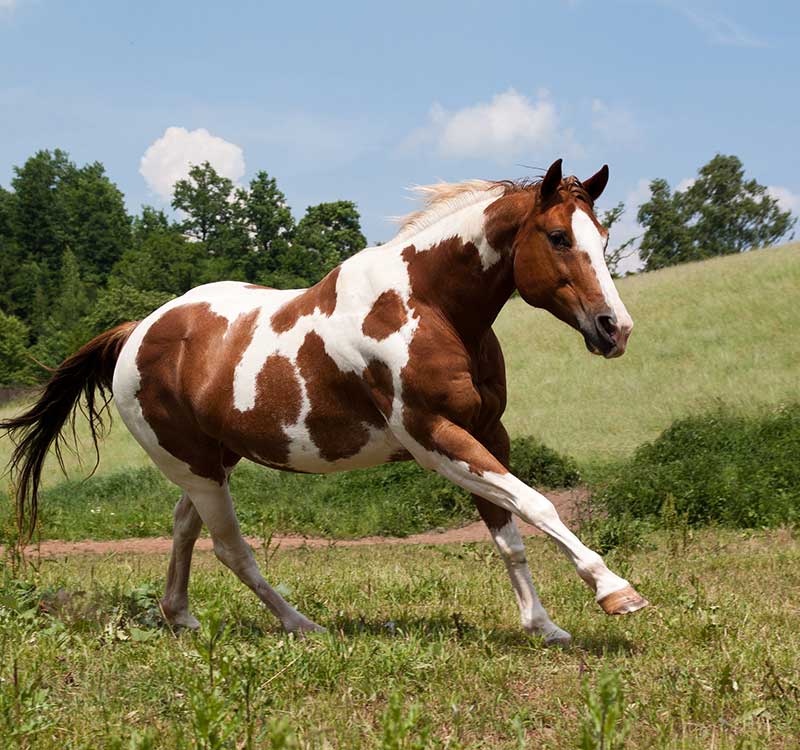
Why Are American Paint Horse Patterns Important?
For horse enthusiasts or breeders interested in owning and registering paint horses, learning about the recognized paint horse patterns by registry associations is imperative. These parameters, apart from bloodline and body type requirements, ensure you can make an informed decision when acquiring a horse or managing breeding programs. They are also crucial for registration and pedigree.
The Different Paint Horse Patterns
Despite being renowned for the signature, paint-like pattern, the paint horse breed is very diverse. There is a variety of colors and patterns, which can make it difficult to determine if a paint horse is authentic just by looking at it without knowing about paint horse coat patterns.
For that matter, the APHA recognizes three types of paint horse patterns —tobiano, overo, and tovero— and provides guidelines to identify them. Below, we’ll go over tovero, tobiano, and overo characteristics provided by the APHA:
Tobiano Pattern
Tobiano horses are characterized by a white or black base color with large, irregularly shaped patches. They offer a captivating spectacle for its admirers. You can spot a tobiano horse by the following standards:
- Pattern: Tobiano horses feature extensive, asymmetrical patches of color that stretch across their bodies. The base color can be predominantly black or white. They generally have white legs, at least below the hooks and knees.
- Head Markings: Tobiano horses typically present a solid-colored head devoid of significant head markings, with the exception of a blaze, strip, star, or snip.
- Color Concentration: The patches of color on Tobiano horses are often concentrated around the flanks and hindquarters, with the darker color usually covering one or both flanks.
- White Markings: All the white markings in tobiano horses are regular and distinct, with a shield-like appearance extending down the neck and chest.
- Tail: The tail often has two colors.
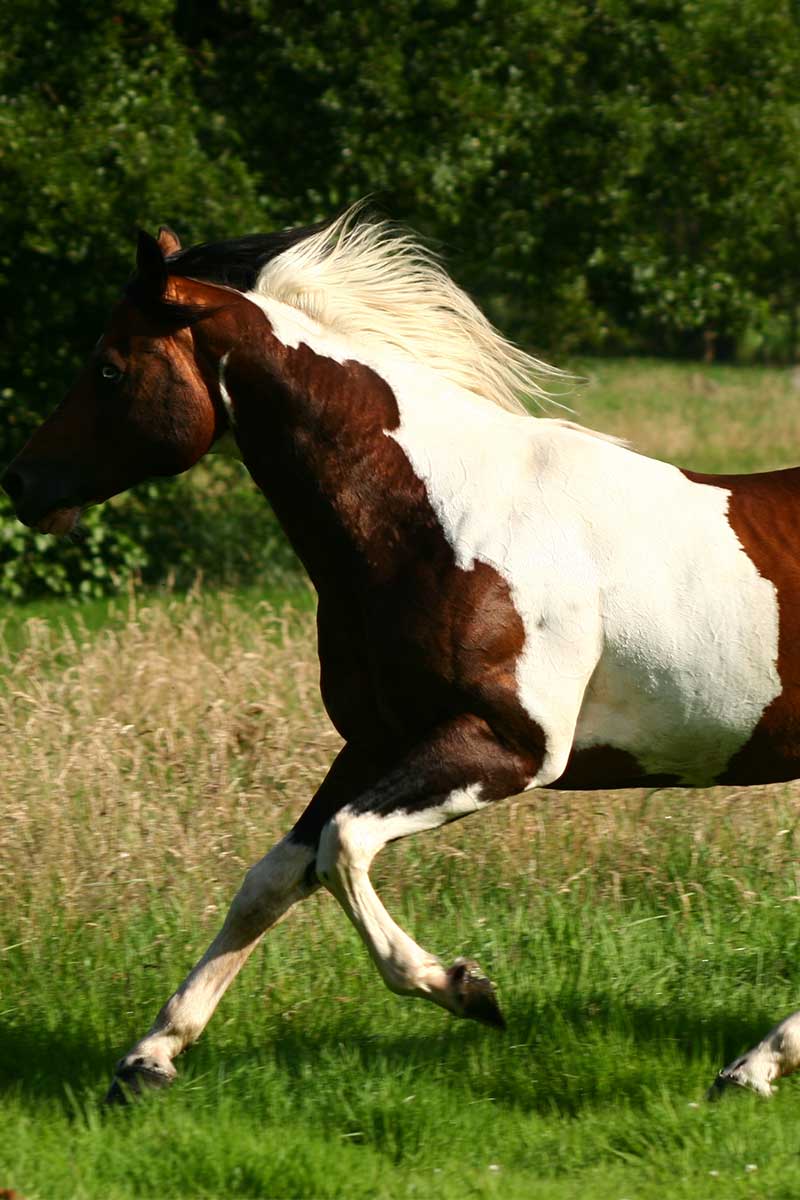
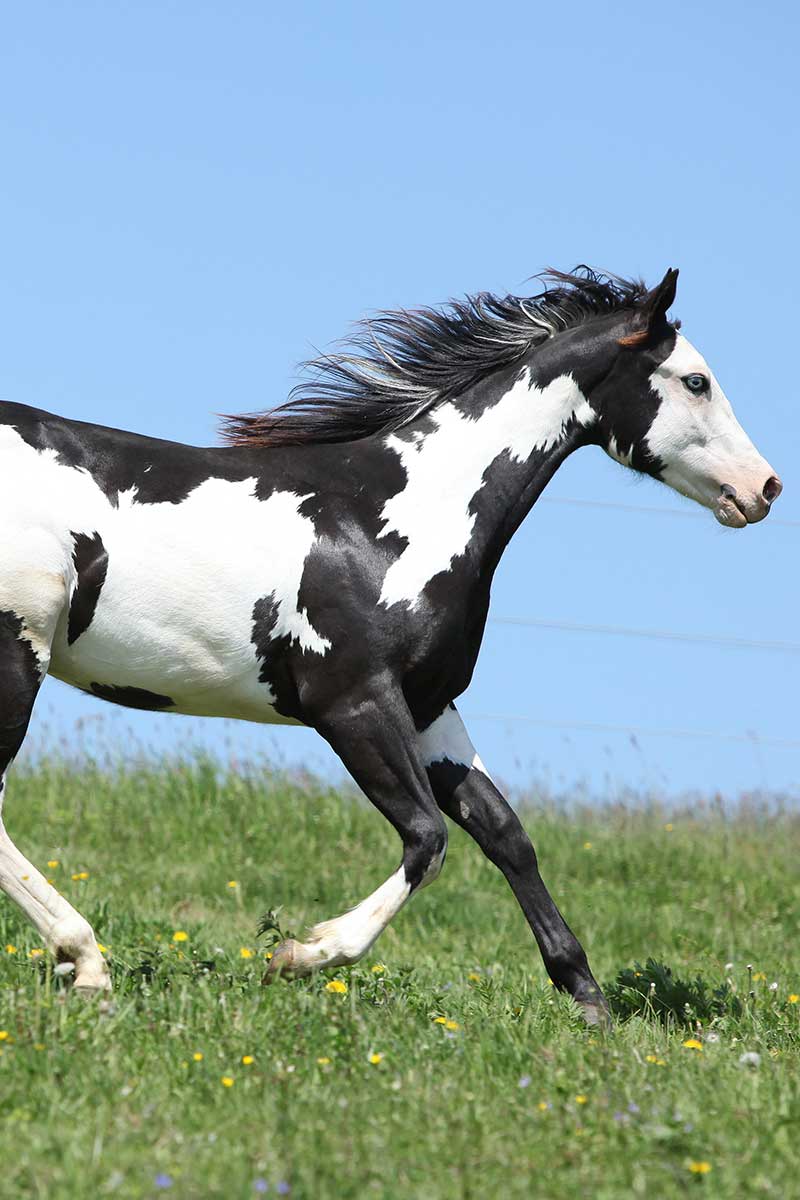
Overo Pattern
Distinguished by scattered, irregular patches of color, Overo embodies elegance and individuality. The hallmark characteristics of Overo include:
- White Markings: Overo horses are predominantly black or white, distinguished by irregular white markings, either scattered or splashed. The white pattern usually doesn’t cross the horse’s back between the whithers and tail.
- Head Markings: Overo horses commonly exhibit distinctive facial markings, such as bald, apron, or bonnet faces.
- Legs: At least one or all four legs are generally dark.
- Tail: The tail is usually one color.
- Types of overos: There are two overo sub-categories: splashed white and sabino pattern. The first has a mostly or completely white head, blue eyes, and white legs, and the latter has irregular spotting with extensive roaming, which can vary from minimal to entirely white.
Tovero Pattern
Tovero, a word that combines “tobiano” and “overo,” represents a blend of these two specific coat patterns, resulting in a striking combination that often exhibits characteristics of both. Key features of Tovero include:
- Color: Tovero horses are mostly or nearly all white.
Pattern: Contrasting markings are regular and distinct, like those of tobiano horses, with a shield-like appearance. They also have dark pigmentation around the ears, expanding to the forehead and or eyes. - Flanks: They have contrasting colors covering one or both flanks.
- Tail: The tail may have spots of various sizes at the base.
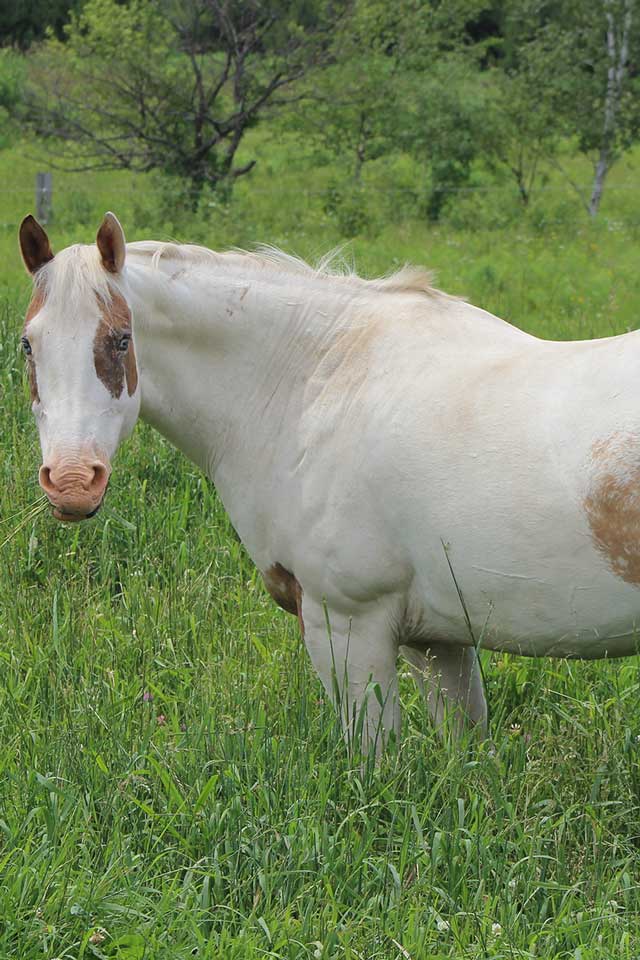
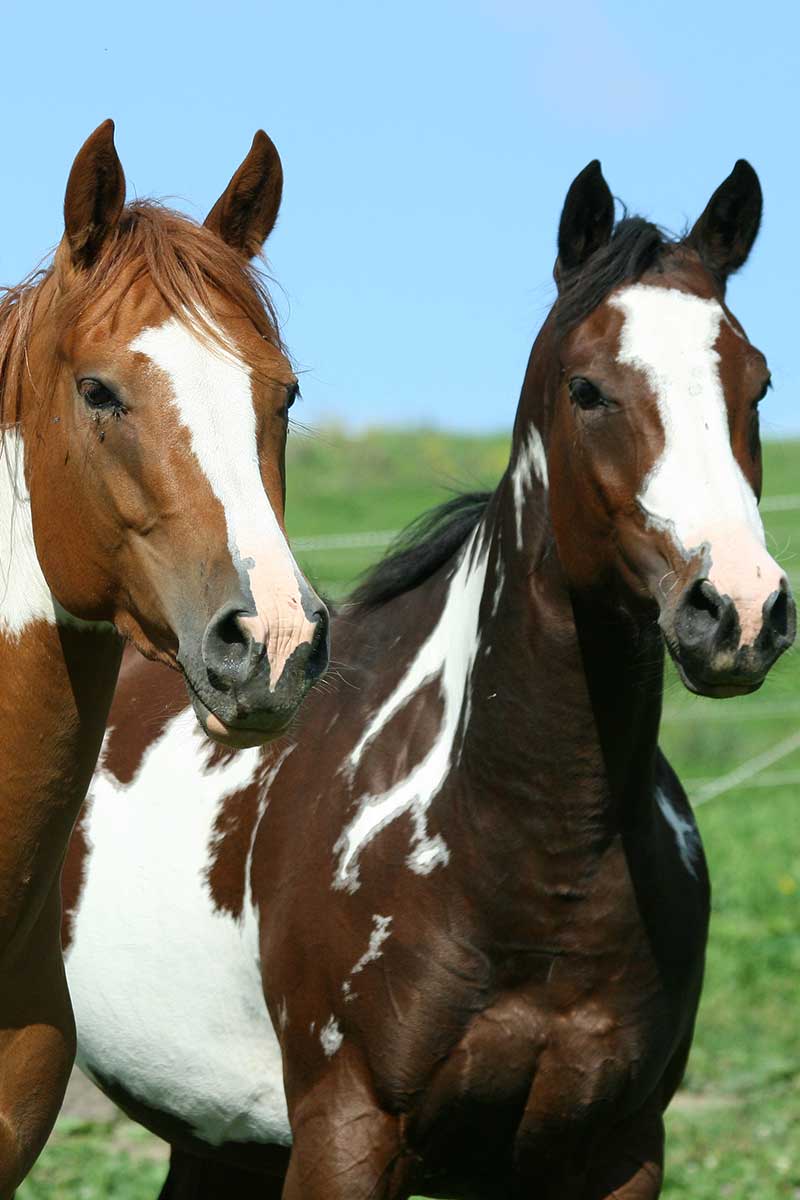
Exploring Paint Horse Coat Colors
Beyond the captivating patterns, American Paint Horses come in a spectrum of colors, each contributing to their unique allure. Some of the colors recognized by the APHA include:
Bay: A reddish-brown body with black points (mane, tail, legs, and ear tips).
- Black: A solid black coat without any other color markings.
Chestnut/Sorrel: A reddish-brown coat varying from light to dark shades. - Palomino: A golden coat with a white or cream-colored mane and tail.
- Buckskin: A yellowish or gold coat with black points.
- Gray: A mixture of white and dark hairs, often leading to a gray appearance.
- Roan: A coat with a mixture of white and colored hairs, resulting in a speckled appearance.
Discover the Beauty of Paint Horses!
The American Paint Horse will surely captivate the heart of any equestrian fan, and if you aspire to breed or raise paint horses, learning to distinguish the different paint horse patterns is crucial to ensure the integrity of the breed.
If you are still considering acquiring a paint horse, you can convince yourself and admire their beauty up close at our ranch. With Touch of Chrome Paints, you can embark on a scenic trail riding adventure riding on registered paint horses.
Contact us to learn more about the breed or our trail riding services!
